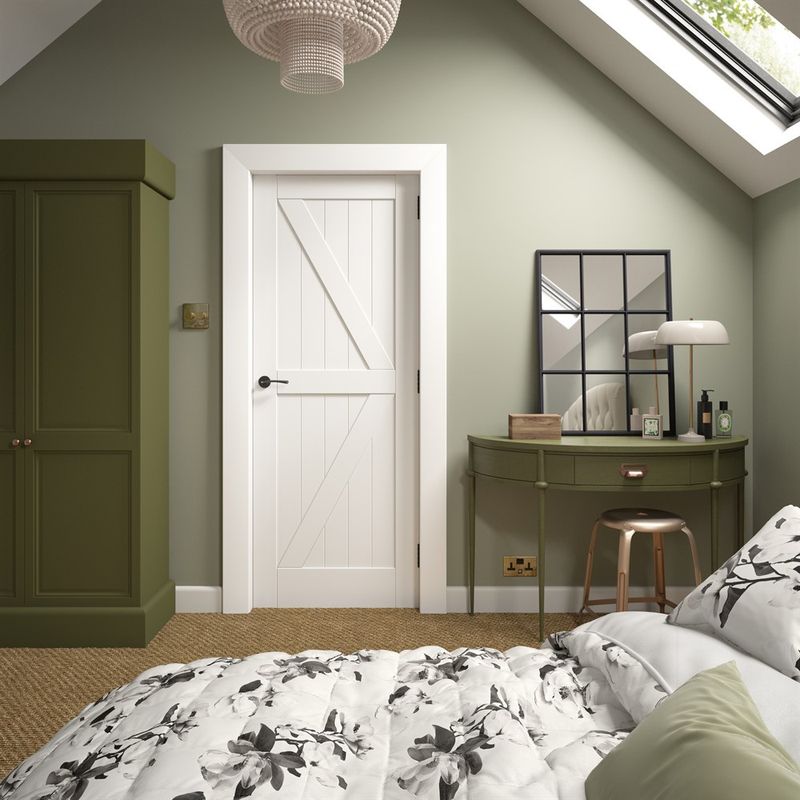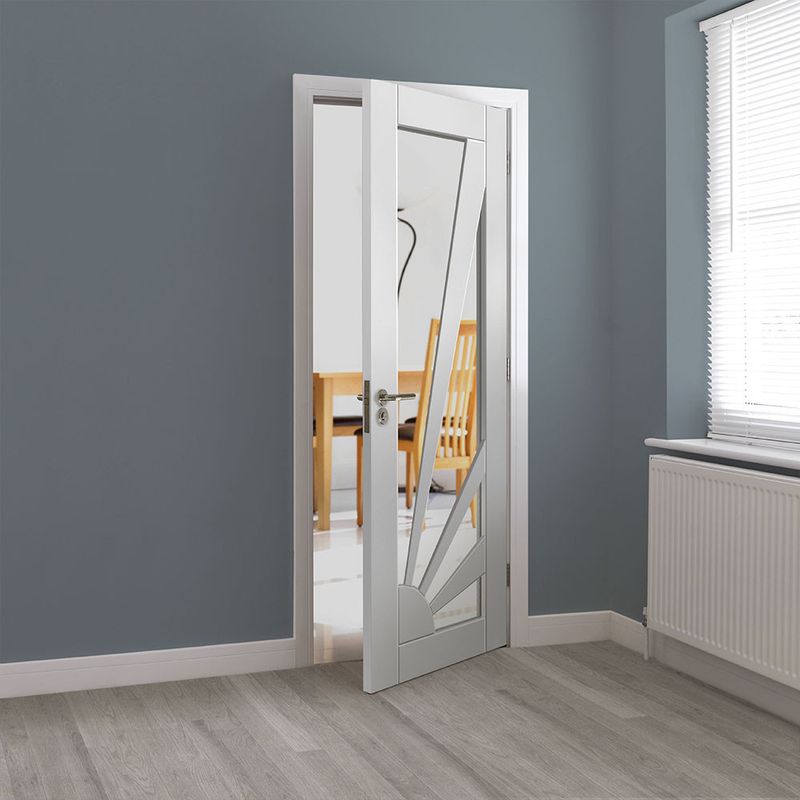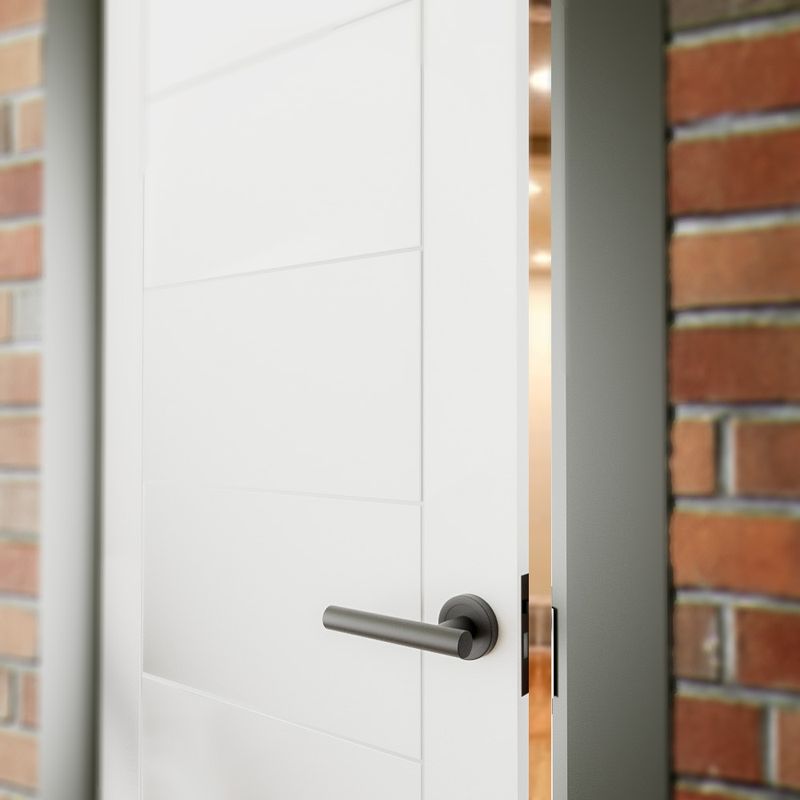Are you in the market for a new internal door? Then you’ve surely noticed doors are advertised in different finishes – including fully-finished/pre-finished, unfinished, and primed.
But what is a primed door? Why should you buy one? What are its main benefits?
So many questions.
At Door Superstore, we decided to lend a hand by putting together a detailed guide on primed doors to answer all your burning questions.
Let’s crack on.
Table of contents:
- What are primed doors?
- What is the difference between pre-finished and primed doors?
- Why should you choose primed internal doors?
- How to finish a primed door
- Final thoughts
What are primed doors?

Before being painted, wood has to be primed first. Priming is a specific paint which seals the wood and increases adhesion to the finishing coats of paint. And, as their names suggest, primed internal doors (occasionally referred to as pre-primed doors) have already received this base coat of primer in the factory.
Can you paint straight onto primed doors?
Indeed, you can. Primed doors are ready to be painted the minute they’ve arrived.
Now:
White primed internal doors are the most common. This means the primer is white, allowing you to choose any colour that matches your décor.
What is the difference between pre-finished and primed doors?
Pre-finished, also known as fully-finished doors, are primed, varnished and painted in the factory, so they’re ready to be fitted. Primed doors are primed but not painted, which means you have to paint them yourself.
Alternatively, you can get a professional to do it if you’re not sure how to paint primed doors.
Why should you choose primed internal doors?

The best way to think of a primed door is as a solution that bridges the gap between an unfinished and a fully-finished (also known as a pre-finished) door.
Here’s the scoop:
If you’re confident in your DIY skills but don’t have the time or desire to prime an unfinished door, a primed door would be perfect for you.
Or perhaps you have in mind a very specific colour?
Let’s face it:
You’ll have to search awfully hard to find a Caribbean blue six panel fully-finished door, for instance. Spare yourself the frustration and buy a primed one instead.
And if you don’t feel you’re up to the task of finishing it yourself, you can always hire a handyman to do a professional job.
And speaking of finishing…
How to finish a primed door

You might be wondering:
Do primed doors need painting?
Indeed, they do. Your brand-new primed door might look like it’s good to hang straight away, but it still needs to be painted.
While it’s possible to paint a door after it’s fitted, it’s better to do it beforehand in order to make sure you paint it evenly on all sides. Follow our guide on how to paint interior doors for further details and pro tips.
Once you’ve finished your new internal door, and the paint is dry, all that’s left is to fit it. As you’d expect, we also have a guide on that.
One related question that frequently pops up is:
Can you stain a primed door?
It’s possible to stain a primed door, but you’ll have to use special opaque wood stains or glazes to do so. Keep in mind that staining a door that has already been primed might add additional colour, so it’s not recommended.
Final thoughts
In many ways, a primed door gives you the best of both worlds.
On the one hand, you get to save some time and effort because it’s already been professionally primed at the factory.
On the other hand, you get to choose that exact shade of salmon pink paint that goes so well with your walls.
All in all – it’s a win-win situation.











